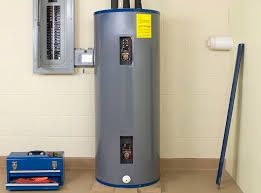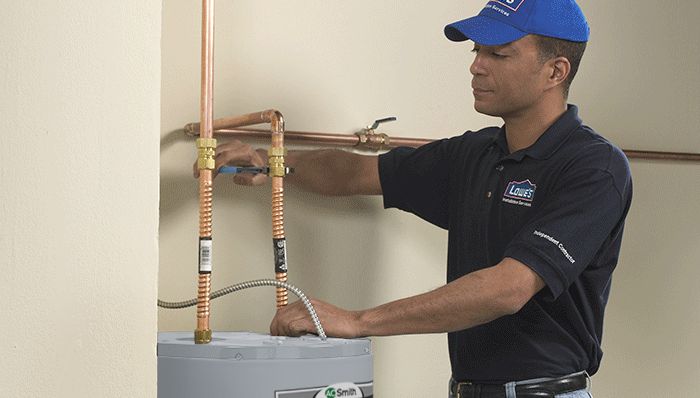Simple Guide to Caring for Your Home's Hot Water SystemEfficient Strategies for Maintaining Your Home's Hot Water SystemBest Practices for Maintaining Your Home's Hot Water System
Book Your InstallationWhat're your opinions on Water Heater Maintenance Tips You Can't Afford to Forget?

Warm water is necessary for everyday comfort, whether it's for a rejuvenating shower or cleaning dishes. To ensure your hot water system runs efficiently and lasts much longer, regular maintenance is key. This article gives practical ideas and understandings on how to maintain your home's warm water system to prevent interruptions and costly repair work.
Introduction
Maintaining your home's warm water system could seem complicated, however with a couple of simple steps, you can guarantee it operates efficiently for several years ahead. This guide covers every little thing from comprehending your warm water system to DIY upkeep ideas and knowing when to contact expert assistance.
Relevance of Preserving Your Hot Water System
Normal upkeep not only extends the life expectancy of your hot water system but also guarantees it operates efficiently. Neglecting upkeep can bring about lowered effectiveness, greater power costs, and even early failing of the system.
Signs Your Hot Water System Requirements Maintenance
Understanding when your warm water system needs focus can prevent major issues. Watch out for indications such as irregular water temperature level, strange sounds from the heating system, or rustic water.
Flushing the Water Heater
Purging your hot water heater gets rid of debris accumulation, boosting performance and lengthening its life.
Checking and Replacing Anode Rods
Anode poles avoid rust inside the storage tank. Checking and replacing them when worn is essential.
Facility Issues Calling For Professional Aid
Instances consist of significant leaks, electric troubles, or if your hot water heater is regularly underperforming.
Regular Specialist Upkeep Conveniences
Specialist upkeep can consist of complete assessments, tune-ups, and making certain conformity with security standards.
Inspecting and Adjusting Temperature Level Setups
Readjusting the temperature level setups makes certain ideal efficiency and safety and security.
DIY Tips for Maintenance
You can carry out numerous maintenance tasks on your own to keep your hot water system in top problem.
Checking for Leakages
On a regular basis examine pipes and links for leaks, as these can bring about water damages and greater bills.
Comprehending Your Hot Water System
Prior to diving into maintenance tasks, it's valuable to comprehend the standard components of your hot water system. Usually, this includes the water heater itself, pipelines, anode rods, and temperature controls.
Monthly Maintenance Tasks
Normal regular monthly checks can help catch small concerns before they intensify.
Examining Pressure Alleviation Valves
Evaluating the pressure relief valve guarantees it works properly and protects against excessive pressure build-up.
Insulating Pipes
Shielding warm water pipes minimizes heat loss and can save power.
When to Call a Professional
While DIY maintenance is advantageous, some problems call for professional competence.
Verdict
Regular maintenance of your home's hot water system is vital for efficiency, durability, and expense savings. By complying with these ideas and understanding when to look for expert aid, you can ensure a reputable supply of warm water without unforeseen interruptions.
Water Heater Maintenance: The Basics
Maintaining your water heater will ensure it operates efficiently and has a longer lifespan. Neglecting regular maintenance can lead to costly repairs and an even bigger chunk of your savings if you have to replace it sooner than necessary. But there’s good news: Most water heater maintenance tasks are relatively simple and easy for homeowners with basic DIY skills.
Flush the Water Heater
Over time, sediment and minerals can build up in the tank, reducing its efficiency and potentially causing damage. To flush the tank, turn off the power or gas supply, attach a hose to the drain valve near the bottom and open the valve to drain the water until it runs clear. Ideally, flush the tank annually.
Replace the Anode Rod
The anode rod is a sacrificial metal rod that helps prevent corrosion inside the tank. Inspect and replace it every three to five years or per the manufacturer's recommendation. To replace the anode rod, turn off the power or gas supply, drain a few gallons of water from the tank, unscrew the old rod and replace it with a new one. If the anode rod is significantly corroded or covered in calcium buildup, it's a sign the water heater may need to be replaced soon.
Tune-Up
A yearly tune-up can help identify potential issues and ensure your water heater operates at peak efficiency. This typically involves checking the thermostat, burner assembly (for gas heaters) and any other components specified by the manufacturer. During a tune-up, the technician may also clean the burner and adjust the pilot light (for gas heaters) or examine the heating elements (for electric heaters).
How to Maintain Your Water Heater
Insulate the tank. Insulating the tank can improve energy efficiency and reduce heat loss, saving you money on energy bills. You can purchase precut insulation blankets designed specifically for water heaters or use standard fiberglass insulation wrapped securely around the tank. Check the temperature. The recommended water temperature for most households is around 120 degrees Fahrenheit (49 degrees Celsius). Higher temperatures can increase energy costs and potentially cause scalding. Use a kitchen thermometer to check the temperature at the faucet nearest the water heater. Monitor water pressure. Excessive water pressure can strain the water heater and cause leaks or even tank failure. Install a pressure-reducing valve if necessary. The ideal water pressure range is between 60 and 70 PSI (pounds per square inch). Test the temperature and pressure (T&P) relief valve. The T&P relief valve is a safety feature that releases pressure if the tank gets too hot or the pressure builds up too high. Test it annually by lifting the lever and allowing a small amount of water to release. Replace the valve if it doesn't release water or reseal properly. Check for leaks. Regularly inspect the tank, pipes and fittings for leaks or corrosion. Deal with issues promptly to prevent further damage. Even a small leak can lead to significant water damage over time. Consider a tankless water heater. If your traditional tank-style water heater is nearing the end of its lifespan ( typically 10 years), consider replacing it with a tankless water heater. These units heat water on demand, reducing standby energy losses and potentially saving you money on your energy bills. Schedule professional maintenance. While homeowners can perform many water heater maintenance tasks, it's still a good idea to schedule professional maintenance every few years. A plumber or HVAC technician can thoroughly inspect the unit, identify potential issues and ensure it operates safely and efficiently. https://www.homeserve.com/en-us/blog/home-improvement/hot-water-heater-maintanence/

Do you enjoy reading about What Kind of Maintenance Do Water Heaters Need?? Create a remark below. We would be glad to hear your opinions about this posting. Hoping that you visit us again soon. If you enjoyed reading our page please make sure you remember to share it. Kudos for your time. Please visit our website back soon.
Go Deal